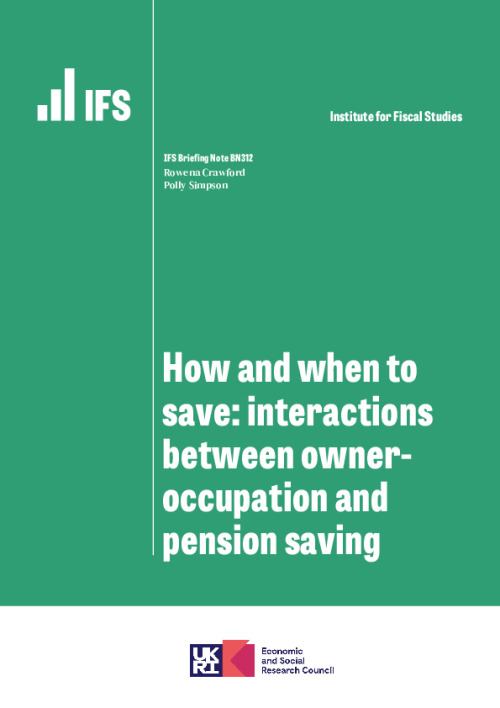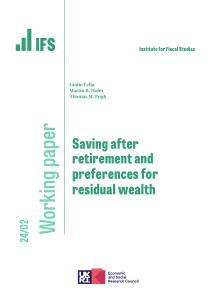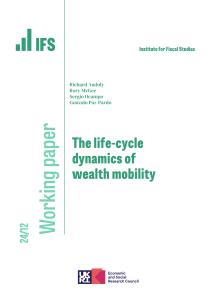Private pensions and owner-occupied housing are the two most important forms of wealth that the majority of individuals accumulate over their lifetimes. How much to accumulate in these forms, and when, are difficult decisions – requiring individuals to consider both their own preferences for housing versus non-housing consumption (both now and in the future), and the relative financial return from different choices given possible future asset price movements, tax incentives, pension scheme rules, and so on.
The research summarised in this briefing note has taken an important first step in understanding how the timing of individuals’ pension saving interacts with the accumulation of housing wealth.
Key findings
1. Before the introduction of automatic enrolment, working renters of all ages were less likely to save in a private pension than those with a mortgage, even after controlling for a rich set of other factors, including earnings. This is most likely to be because of differences between renters and those with a mortgage in terms of characteristics not observed in most household data sets, rather than because many renters are saving for a housing deposit in preference to joining a pension scheme.
2. We find no overall association, on average, between local average house prices and whether or not a young employee is a member of a private pension. Even among those in the middle of the earnings distribution, among whom we might expect the decision whether to save for a deposit or to save in a pension to be most difficult, we find that if average local house prices are £100,000 higher, then this is associated with just a 2 percentage point lower probability of being in a workplace pension. Public-sector employees are more responsive than private-sector employees. This effect appears to be strongest in health and education, where employee pension contributions are often higher than elsewhere in the public sector – although, even here, the effects we find are still modest.
3. Workers aged 35–64 who own their home outright make higher average pension contributions than those who rent, after controlling for other characteristics, including their earnings. However, differences are small, with the mean contribution around £150 per year higher in 2006–08 and the median contribution only £50 per year higher.
4. Very few individuals increase their pension saving when they pay off their mortgage: we estimate that only five out of every 100 individuals who pay off their mortgage choose, at that point, to increase their pension saving by £150 per month or more. This is despite the fact that average mortgage payments among this group have been over £200 per person per month.
5. These findings all point to individuals being very inert in their pension saving: few individuals actively timed their pension saving relative to their spending on (or saving for) housing even before automatic enrolment.
6. Industry or government policymakers wishing to increase individuals’ private pension saving should consider policies that target individuals at the point when they finish repaying their mortgages. Such policies could have particular traction, as these individuals could increase pension saving without having to see spending on other goods or services fall at that point in time.










